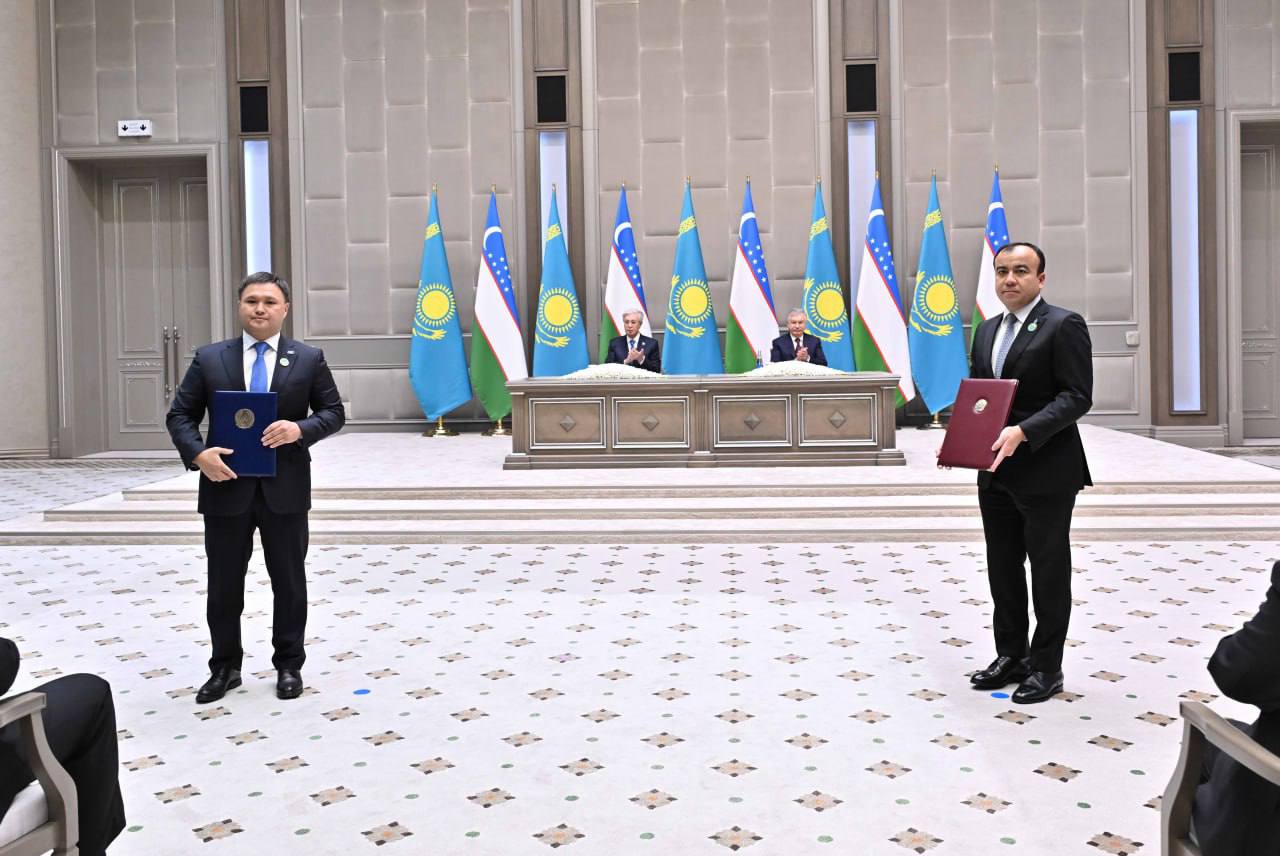BAKU, Azerbaijan, November 22. Kazakhstan and Uzbekistan are taking another confident step toward becoming Central Asia’s main energy tandem. Against the backdrop of growing interest from global players, the two countries are increasingly relying on their own resources and on each other shaping the regional agenda in ways that best serve their interests.
During President Kassym-Jomart Tokayev’s recent visit to Tashkent, bilateral energy cooperation received new momentum. One of the key outcomes of the visit was an agreement between KazMunayGas and Uzbekneftegaz, a document that effectively opens a new era of interaction between the two companies. This is not a one-off project but a comprehensive platform: joint geological exploration, technical data exchange, development of the oil and gas chemical industry, and the establishment of a unified information space. In essence, the two states are proposing to unite not only efforts, but also technologies, infrastructure and their long-term visions for the sector.
“Joint initiatives in the oil and gas sector create a foundation for major investment projects. The exchange of geological and technical data increases transparency, reduces risks, and paves the way for attracting significant capital to the industry. And board-level meetings between KMG and UNG are already focused on practical initiatives—this sends a clear signal to the market about the seriousness of their intentions,” Uzbek expert Ranokhon Tursunova told Trend.
These agreements open the door not only to joint drilling, but also to the construction of new processing facilities and entry into international markets with larger volumes of products. Kazakhstan brings infrastructure; Uzbekistan brings its rapidly developing petrochemical hubs. Together, they are forming an investment magnet the region has simply not had before.
Kazakhstan and Uzbekistan also share common interests and ambitions in the gas sector. According to President Tokayev, the countries intend to further develop the “Russia–Kazakhstan–Uzbekistan” project, which has already become an important element of the regional energy balance.
“The Russia-Kazakhstan-Uzbekistan gas project is delivering successful results. Together, we plan to increase the volume of gas transit. In addition, there are good prospects for expanding cooperation in the oil sector and the nuclear industry,” Tokayev said at a press briefing in Tashkent.
Gas cooperation is already producing tangible results. In the first seven months of 2025, Kazakhstan transited 921.7 million cubic meters of gas through Uzbekistan, and deliveries of Russian gas along this route are expected to rise to 11 billion cubic meters per year.
“Our partnership with Uzbekistan is strategic. Our countries are key elements of a unified energy architecture of Central Asia,” noted Kazakhstan’s Minister of Energy Yerlan Akkhenzhenov.
Electricity is another area where both countries act in sync. Kazakhstan and Uzbekistan have agreed on supplies of nearly 900 million kWh of electricity in 2026. For Kazakhstan, this is a way to withstand peak winter loads; for Uzbekistan, it is an opportunity to manage its energy system more flexibly, especially during the commissioning of new solar, wind and gas power plants.
“This protocol reduces the risks of energy shortages, particularly during power plant maintenance and peak demand periods. It is a step toward creating a more predictable energy model for the region,” explains Professor Tursunova.
Water resources represent a separate level of cooperation. Amid climate fluctuations, falling reservoir levels in Kyrgyzstan, and pressure on the Syr Darya and Amu Darya basins, Kazakhstan and Uzbekistan are strengthening coordination of water flows. This is no longer merely technical work: energy, agriculture and regional security directly depend on coordinated water releases.
In the “green” sector, the two countries are also moving in parallel. Kazakhstan aims to increase the share of renewables to 15 percent by 2030, while Uzbekistan’s target is 40 percent. Their participation in the Green Energy Corridor across the Caspian Sea together with Azerbaijan is becoming one of the key directions. The establishment of the joint venture Yasil Dəhliz Birliyi on July 1, 2025, marked another practical step toward exporting clean energy to Europe.
The region’s largest hydropower initiative, the Kambarata HPP-1, which Kazakhstan, Uzbekistan and Kyrgyzstan are ready to develop with support from the World Bank - also remains high on the agenda. This is a long-term contribution to the sustainability of the regional energy balance.
Today, Kazakhstan and Uzbekistan are not merely developing separate projects, they are building the framework of Central Asia’s future energy system. Within this structure, oil, gas, water, electricity and green technologies become interconnected elements. And the more closely Astana and Tashkent align their cooperation, the more stable the entire region becomes. The two largest countries in Central Asia are not only strengthening their own positions but also shaping a new center of energy power, where decisions are made not outside the region, but within it.







